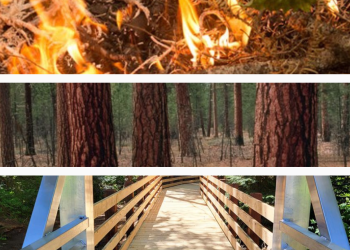Welcome to Mt. Baker-Snoqualmie National Forest
The Mount Baker-Snoqualmie National Forest in Washington State extends more than 140 miles along the western slopes of the Cascade Mountains from the Canadian border to the northern boundary of Mt. Rainier National Park. The Forest covers portions of Whatcom, Skagit, Snohomish, King, and Pierce Counties. Proximity to Seattle and Vancouver, Canada, make the Mt. Baker-Snoqualmie National Forest one of the most visited National Forests in the country.
Northwest Forest Plan & Amendment

The Northwest Forest Plan covers 24.5 million acres of federally managed lands in California, Oregon, and Washington. It was established in 1994 to address threats to threatened and endangered species while also contributing to social and economic sustainability in the region. Over 30 years later, the Northwest Forest Plan needs to be updated to accommodate changed ecological and social conditions.





